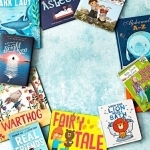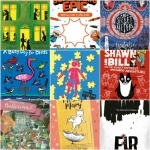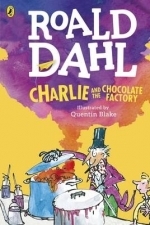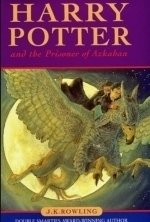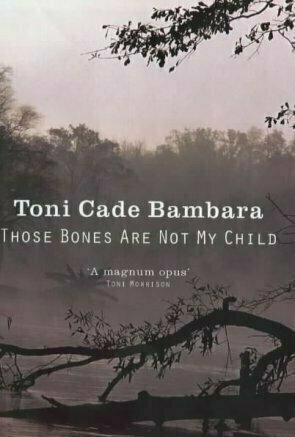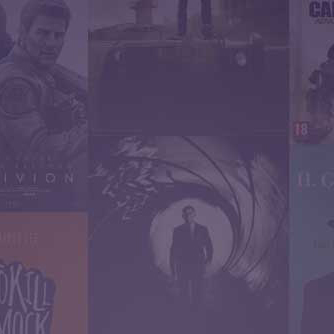
Children's books
Books that I read in elementary and books that I read helping in elementary classrooms
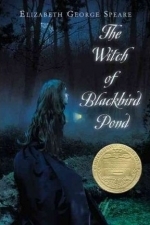
The Witch of Blackbird Pond
Book
Sixteen-year-old Kit Tyler is marked by suspicion and disapproval from the moment she arrives on the...
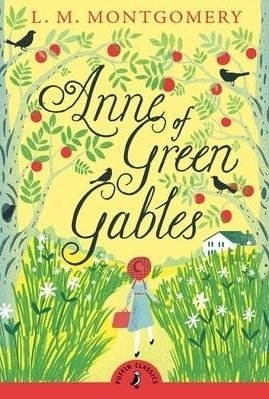
Anne of Green Gables
L.M. Montgomery and Lauren Child
Book
The Cuthberts are in for a shock. They are expecting an orphan boy to help with the work at Green...
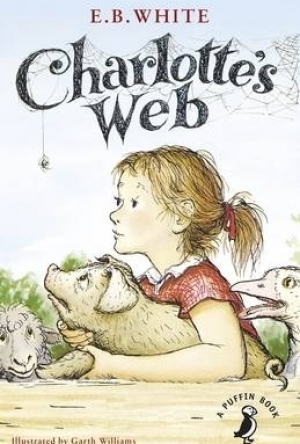
Charlotte's Web
Book
A Puffin Book - stories that last a lifetime. Puffin Modern Classics are relaunched under a new...

Black Beauty
Book
Jump into the saddle and ride with Black Beauty As a young colt, Black Beauty gallops in the fresh...
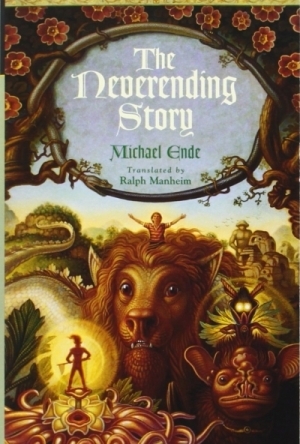
The Neverending Story
Book
Bastian Balthazar Bux steals a book, hides in his school's attic, where he and ventures to...
Fantastica Fantasy Books about books Books made into movies Falcor German books
and 5 other items
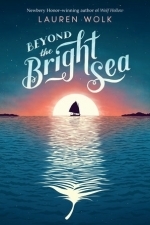
Beyond the Bright Sea
Book
Twelve-year-old Crow has lived her entire life on a tiny, isolated piece of the starkly beautiful...
Children

Real Friends
Book
Following little Shannon's life from kindergarten through fifth grade, Real Friends captures the...
Children Graphic novel

Hilde Cracks the Case
Matthew Lysiak, Joanne Lew-Vriethoff and Hilde Lysiak
Book
Pick a book. Grow a Reader! This series is part of Scholastic's early chapter book line Branches,...
Children

Charlie & Mouse
Emily Hughes and Laurel Snyder
Book
Four hilarious stories, two inventive brothers, one irresistible book! Join Charlie and Mouse as...
Children

Shark Lady: The True Story of How Eugenie Clark Became the Ocean’s Most Fearless Scientist
Jess Keating and Marta Álvarez Miguéns
Book
An Amazon Best Book of the Month! Named a Best Children's Book of 2017 by Parents Magazine! This...
Children
and 5 other items

Open: A Toolkit for How Magic and Messed Up Life Can be
Book
Open: A Toolkit for How Magic and Messed Up Life Can Be is full of honest advice about the big, bad...
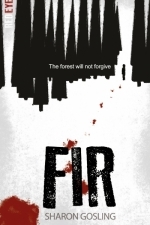
Fir: Red Eye Series
Book
Moving from Stockholm to an isolated pine plantation in northern Sweden is bad enough, but when the...
Young Adult Horror

All About Mia
Book
One family, three sisters. GRACE, the oldest: straight-A student. AUDREY, the youngest: future...
Children

The Secret Keepers
Book
When Reuben discovers an old pocket watch, he soon realizes it holds an incredible power: it can...
Children

The Dragon with a Chocolate Heart
Book
Aventurine is the fiercest, bravest kind of dragon, and she's ready to prove it to her family by...
and 8 other items
Erika (17789 KP) rated Charlie and the Chocolate Factory in Books
Dec 1, 2017
Charlie and the Chocolate Factory was one of my favorites growing up. It's got some of the best insults I've ever read in a childrens book. I also love the illustrations by Quentin Blake.
The Chocolate Lady (94 KP) rated The Case of the Haunted Swamp (Note Hunter, #1) in Books
Oct 5, 2020
Stephanie Neve (104 KP) rated Harry Potter and the Philosopher's Stone in Books
Jun 25, 2019
Saffy Alexandra (89 KP) rated Harry Potter and the Prisoner of Azkaban in Books
May 26, 2019
The way Rowling manages to make us all panic and worry for Harry the entire way through the book to end up actually rooting for the 'bad guy' is probably one of her many talents (no spoilers but read the last book people).
The introduction of the Dementors who are supposed to 'protect' the school and pupils was chilling - no pun intended - and the actual meaning of them for Rowling's own depression was a real interesting twist to these 'childrens' books. Just adding more and more layers to these fabulous books. Introducing a concept such as 'depression' to young readers is a very difficult thing to do and Rowling achieves this with grace and tact. Introducing something as big as depression to young readers, she has managed to crack through the metaphorical glass roof in the way of mental health. Showing children that any person (Wizard or Muggle) can be effected by depression but there are ways to help combat it is something that is done beautifully in this book.
One of the main things I loved about this book was that she made a werewolf, in which horror has made us fear and distrust, into a character we all root for and adore. His backstory of how he has been mistreated by society and basically pushed to one side is respondent to what has happened to certain people in our society. Again, these are meant to be children's books - Rowling manages to put these points across in such a informative but almost gentle way for children to understand without directly shoving it down their throats. I believe in this way Rowling has managed to help the readers who grew up with these books understand the issues in our society and has helped people grow up to want to help end the stigma attached to certain groups and help make equality in our society.
Not bad for children's book.
Mayhawke (97 KP) rated The Christmas Miracle of Jonathon Toomey in Books
Feb 9, 2018
This story is not especially original, but it is the way in which it is told rather than the story itself that makes it stand out. I dislike sugary sentimentalism and one of the problems I have buying childrens books (particularly Xmas ones) is that the market is so over-loaded with 'sugar' that it's verging on a serious case of diabetes. This book is not sugary, nor even particularly sentimental. It tells a fine story, calmly and with dignity.
It has been a popular story with all the varied personalities in the family, which has to say something about breadth of appeal, and as it was re-issued in 2015 It seems to be weathering social change as well.
Nicole Hadley (380 KP) rated The Exact Location of Home in Books
Jun 18, 2018
Messner has given us a compassionate and necessary middle grade story about the reality of homelessness for many children today. This story has a unique premise with the geocaching theme and I love that while the main character is in 8th grade he will be relatable for students both much younger and much older than he is. I would love to get this book into the hands of all teachers and administrators who struggle to understand how difficult school can be for children without a stable home life, and who make well-intended but thoughtless comments about the homeless population.
I received this ARC from Bloomsbury USA Children's Books and Bloomsbury USA Childrens via NetGalley in exchange for an honest review.
Hadley (567 KP) rated Those Bones Are Not My Child in Books
Nov 12, 2019
Bambara writes not in a normal narrative - - - just telling a story from specific viewpoints, but she often breaks off into smash poetry to depict a character's state-of-mind, which, sometimes can be off putting for the reader, breaking the flow of the story. Yet, the use of smash poetry combined with the era and the heart breaking subject at hand, separates Those Bones Are Not My Child from every True Crime book I have ever read. But a note for fans of True Crime, this story is from the view point of the victims' families and the search they went through to try and catch the murderer(s), unlike most TC books, which follow the police through the investigation leading to, usually, the capture of the perpetrator. From living in Atlanta during the time of the murders, Bambara was able to reconstruct the life of a black family in 1980's Georgia, while focusing on the effect these terrible crimes had on the surrounding community. Bambara did an amazing job on what most writers cannot.
The amount of characters, specifically the fictional ones, are very well created. She describes just enough to give readers the ability to tell them apart, showing every now and then from their own viewpoints. Out of all the characters, I came to really like Zala's two other children: Kenti and Kofi. One particular scene shows the strain of Sonny's disappearance on their family: " Zala parked the comb again and sat back. 'Listen, you two.' Kofi dropped down onto his knees. 'The police and the newspapers don't know what the hell is going on, so they feel stupid, because they're supposed to know, they're trained to know, they're paid to know. It's their job. Understand? But it's hard for grown-ups to admit they're stupid, especially if they're professionals like police and reporters. So they blame the children. Or they ignore them and fill up the papers with the hostages in Iran. Understand? And now... Jesus... they've got people calling those kids juvenile delinquents.'
'Don't cry.' Kenti tried to lean into her lap and got pushed away.
'They don't know a damn thing and they act like they don't want to know. So they blame the kids 'cause they can't speak up for themselves. They say the kids had no business being outdoors, getting themselves in trouble.'
'You let us go outdoors.'
'Of course I do, baby. We go lots of places, 'cause a lot of people fought hard for our right to go any damn where we please. But when the children go out like they've a right to and some maniac grabs them, then it's the children's fault or the parents who should've been watching every minute, like we don't have to work like dogs just to put food on the table.'
Kofi walked on his knees towards the bed, but he didn't lean on her like he wanted 'cause she might push him away. So he just put his hand on the mattress next to hers."
During the Atlanta Child Murders, victims were random, except for that they were children from the same neighborhood, and they were African-American. At first, police didn't believe a serial murderer was going around abducting children, but rather that 'poor, broken' families were killing their own. In the Prologue, Bambara shows that the victims' families and private detectives came up with more ideas of the motive than the police did:
" White cops taking license in Black neighborhoods.
The Klan and other Nazi thugs on the rampage.
Diabolical scientists experimenting on Third World people.
Demonic cults engaging in human sacrifices.
A 'Nam vet unable to make the transition.
UFO aliens conducting exploratory surgery.
Whites avenging Dewey Baugus, a white youth beaten to death in spring '79, allegedly by Black youths.
Parents of a raped child running amok with 'justice.'
Porno filmmakers doing snuff flicks for entertainment.
A band of child molesters covering their tracks.
New drug forces killing the young (unwitting?) couriers of the old in a bid for turf.
Unreconstructed peckerwoods trying to topple the Black administration.
Plantation kidnappers of slave labor issuing the pink slip.
White mercenaries using Black targets to train death squadrons for overseas jobs and for domestic wars to come. "
All of these theories are explored with evidence in Those Bones Are Not My Child. One scene in Part III, Zala's cop friend, B.J. shows up to her house to tell her to stop bringing attention to the investigation, " 'That Eubanks woman - - - your husband's friend? - - - she said you were bringing in the TV networks to blow the case open. I thought we had an agreement to keep each other informed. This morning I find out through the grapevine that you parents got a medium stashed in a hotel here in town, some woman who's been making headlines up north with cases that supposedly have the authorities stumped. If you knew how much work has been done on this case - - - no, listen, don't interrupt me. Then I find out - - - and not from you - - - that some of you parents are planning to tour the country cracking on the investigation. That's not too smart. And you should have told me.' " These two may have been fictional characters, but in Bambara's Acknowledgments, she states that all scenarios were true, and that she made B.J. to tell about the actual police officers who were involved with the investigation.
The tension between the police and the public is felt throughout the entire story. Despite all of the work the citizen task force put in, police arrested a man named Wayne Williams for the murder of two adult victims (who, due to their mental age, which was stated to be that of children, were placed on the victims' list of the Atlanta Child Murders): " Wayne Williams, charged with the murder of twenty-seven-year-old Nathaniel Cater and implicated in the murder of the other adults and children on the official list..." Zala, having worked for almost a year at the STOP offices, she, along with most of the community, doubt that Williams was a lone killer or even the killer at all. Williams never stood trial for the childrens' murders, but the police informed the public that he did it, case closed - - - although, after Williams' arrest, children were still being abducted and their bodies were still being found. Even after Williams' trial and the guilty verdict for two adult victims, some people stuck around to continue to investigate and claim Williams a 'scapegoat' of politics: " There were still pockets of interest and people who wouldn't let the case go. James Baldwin had been coming to town off and on; a book was rumored. Sondra O'Neale, the Emory University professor, hadn't abandoned her research, either. From time to time, TV and movie types were in the city poking around for an angle. Camille Bell was moving to Tallahassee to write up the case from the point of view of the STOP committee. The vets had taken over The Call now that Speaker was working full-time with the Central American Committee. The Revolutionary Communist Party kept running pieces on the case in the Revolutionary Worker. Whenever Abby Mann sent down a point man for his proposed TV docudrama, the Atlanta officials and civil rights leaders would go off the deep end. " At the end of it all, the questions still remain: did Williams kill all of those children by himself? Was he part of a pornographic cult that killed the children? Or is Williams completely innocent, and the murderer(s) are still out there? In Those Bones Are Not My Child, I guarantee you will be left questioning if the police were right.
All in all, the writing transitions can become confusing sometimes, especially the interludes of smash poetry, but I highly recommend this book to people who like the True Crime genre, especially of any interest in this specific case.
